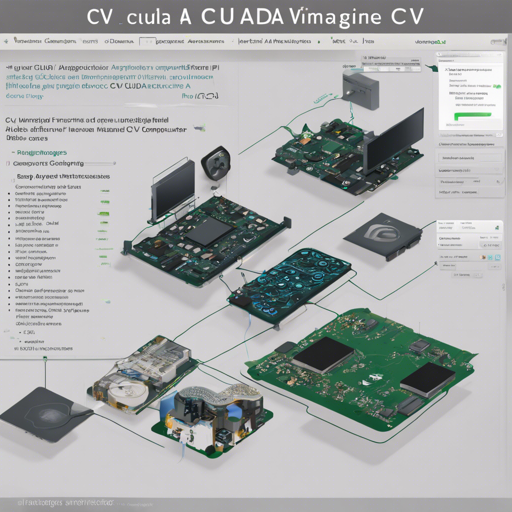CV-CUDA is an open-source project that provides a robust environment for building advanced AI imaging and computer vision applications. It harnesses the power of GPU acceleration for quick and efficient pre- and post-processing of images. In this guide, we will walk you through the steps to get started with CV-CUDA, as well as some troubleshooting tips to help you navigate potential issues.
Getting Started with CV-CUDA
To kick-off your journey with CV-CUDA, it’s essential to ensure you have the right setup. Below are the compatibility requirements and steps for installation.
Compatibility
- Build Platform: Various Linux distributions, Windows (WSL2), and aarch64 platforms are supported.
- CUDA Version: 11.x or 12.x
- Python Versions: 3.8, 3.9, 3.10, and 3.11
- Minimum Nvidia Driver: 525 or later
Installation Methods
You can install CV-CUDA using one of the following methods:
1. Python Wheel File Installation
Download the appropriate .whl file for your architecture and execute the following command:
pip install cvcuda_cu_ver-x.x.x-cppy_ver-cppy_ver-linux_arch.whlReplace the placeholders accordingly, e.g., cu_ver is your desired CUDA version, x.x.x is the CV-CUDA release version, and so forth.
2. DEB File Installation
To install the libraries and development headers, use the command:
sudo apt install -y .cvcuda-lib-x.x.x-cu_ver-arch-linux.deb .cvcuda-dev-x.x.x-cu_ver-arch-linux.debFollow this by installing Python bindings:
sudo apt install -y .cvcuda-pythonpy_ver-x.x.x-cu_ver-arch-linux.debBuild from Source
If you prefer to build CV-CUDA from source, follow these steps:
1. Set Up the Repository
Install the required dependencies:
sudo apt install -y git git-lfsClone the repository and initialize:
git clone https://github.com/CVCUAD/CV-CUDA.git
cd ~cvcuda
./init_repo.sh2. Install Further Dependencies
You’ll need compilers and other tools:
sudo apt install -y g++-11 cmake python3-dev libssl-dev patchelf
sudo apt install -y cuda-11-7 # or cuda-12-23. Build CV-CUDA
Use the following command:
cibuild.sh [release|debug] [output build tree path]Understanding CV-CUDA Code Like an Architect
Imagine you are an architect designing a building. Each component of the CV-CUDA code is like a different part of a building where:
- Foundation – This represents the compatibility requirements and dependencies that guarantee a stable structure.
- Walls – The installation methods function as walls, which provide security and functionality, each constructed from a unique material (Python Wheels, DEB files, etc.).
- Roof – The source building setup is the roof, protecting your architecture from the elements while showcasing your design blueprint.
Troubleshooting Tips
While setting up CV-CUDA, you may encounter some challenges. Here are a few common issues and their solutions:
- GCC Compatibility: Ensure your GCC version is 11.0 or higher for C++17 support.
- CUDA Conflicts: Uninstall any existing packages from an older CUDA version before installing a new one.
- Documentation Issues: Make sure to upgrade Sphinx to the latest version as follows:
pip install --upgrade sphinx - Operator Errors: If you encounter operator bugs, ensure you are not using formats identified in the known issues section.
For more insights, updates, or to collaborate on AI development projects, stay connected with fxis.ai.
Conclusion
At fxis.ai, we believe that such advancements are crucial for the future of AI, as they enable more comprehensive and effective solutions. Our team is continually exploring new methodologies to push the envelope in artificial intelligence, ensuring that our clients benefit from the latest technological innovations.

